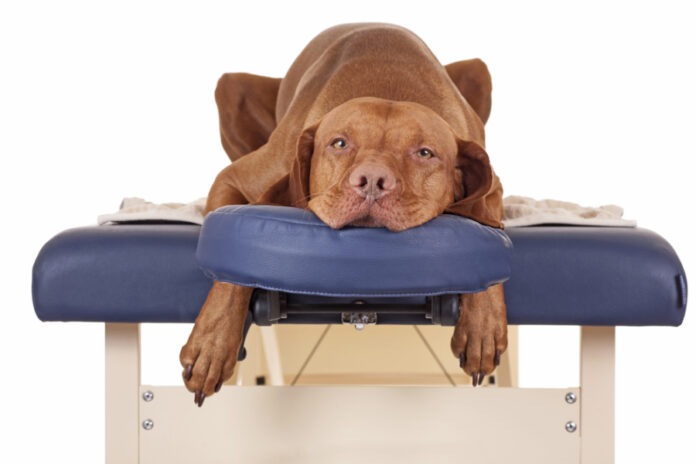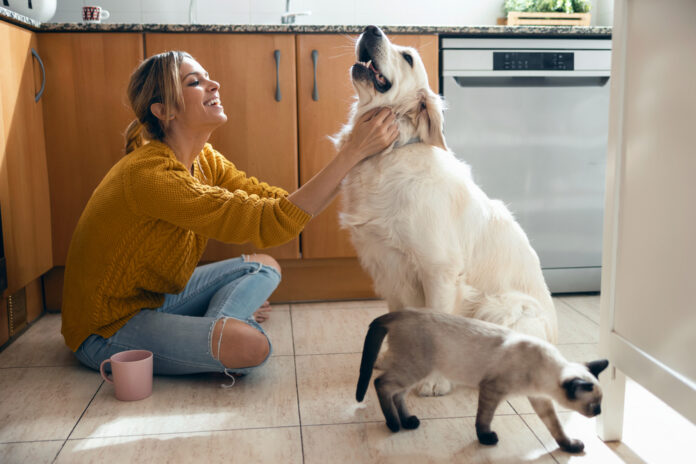Including your dog in your exercise routine

Whether you’re a jogger or a cyclist, exercising with your dog is a great way for you to bond and enjoy physical activity together. But including him in your exercise routine also means taking his abilities and safety into account.
There’s no time like the present to get back to your exercise routine! Just walking your dog helps ensure you’re getting some physical activity, of course, but many people have gone a step further and are incorporating their dogs into their own exercise regimes. Having a workout buddy helps keep us accountable, and dogs need exercise as much as we do. But it’s important to know just how much activity your dog needs, if he’s fit enough to participate, and how to exercise together safely.
We bike faster than we walk or jog, and not all dogs, even if they are superb runners, will be able to keep up with our personal best.
Choosing an activity
The first step is to choose a form of exercise that’s going to work for your dog as well as for you. Naturally, there are certain types of exercise dogs shouldn’t participate in. You wouldn’t take your dog to an aerial yoga class, for example. Additionally, some activities might be great for one dog but bad for another, depending on his breed, and any health limitations he might have.
“The breeds that are best to exercise with are dolichocephalic dogs,” says veterinarian Dr. Sarah Wooten. “Dolichocephalic means they have long noses. Short-nosed breeds, like pugs or bulldogs, have a much harder time because the anatomy of their noses limits airflow.” Because of this, short-nosed (brachycephalic) dogs don’t make good exercise partners.
Walking, jogging and running
It’s fine for long-nosed dogs such as golden retrievers, German shepherds, or border collies to enjoy three of the most popular forms of exercise – walking, jogging or running – with their people. But running and jogging, and even long challenging walks, can be dangerous or even life-threatening for a pug, Boston terrier, or Shih tzu.
If you have a brachycephalic dog, restrict your mutual workouts to something simple, like a short and steady walk. If you’re a jogger or a long-distance walker, this may not be the kind of workout you desire, but here’s a tip: go for your jog or walk before or after you take your dog out – this way, walking your pup can serve as a warm-up or cool-down for your own workout. You get to spend time together, while both still receiving the level of exercise you need.
Bicycling with your dog
Biking is another popular option among dog parents, but it can be tricky for both dog and human, as there are obvious safety concerns involved.
- One of these concerns is the speed at which you are traveling. We bike faster than we walk or jog, and not all dogs, even if they are superb runners, will be able to keep up with our personal best. If your dog seems to enjoy the adventure, however, make sure to stop regularly to give him a breather and some water. This will help him avoid exhaustion, and overheating in warm weather.
- Another safety concern with biking is the threat of the leash getting tangled in the tires of the bike, and causing injury to both you and your dog. Using a regular leash is not a chance you want to take, that’s why you can buy bike leashes made specifically for cyclists and their pups.
When bicycling with your dog for the first time, start small and slow. Try going up and down the driveway first, then along the street a short way, being absolutely sure that you’re following road safely regulations for bicycles. Once you both have the hang of it, you can start going further afield, although it’s always best to stay away from busy streets and roads.
Check your dog’s health first
With all exercise routines, it’s important to first make sure your dog is healthy enough to join you on your fitness journey. According to a licensed veterinarian, Jessica Kirk, “The best way to know if your dog is fit enough for the exercise you have in mind is to ask your veterinarian to give him a physical exam,” says veterinarian Dr. Jessica Kirk. “After your vet examines your dog’s heart, lungs, body condition, and other factors, he or she can help you decide what types of exercise are right for your dog and how rigorous the workout should be. Your vet can also help you come up with a plan to help ease your dog into the exercise routine without doing unintended harm to his health.”
Natalie Buxton of Operation Kindness, a no-kill shelter in North Texas, underlines the importance of easing a dog into an exercise regime. “Warming up before beginning any exercise is something that humans practice, and the same can be applied to dogs,” she says. “Determine an activity that can be paced. Allow your dog time to warm up to these activities by being gentle and starting off slow; this can help encourage him to participate more. Limiting the amount of exercise in the beginning to about ten or 15 minutes at a time helps reduce the risk of the dog being overwhelmed, and gives him time to get into the groove of the new activity. This is especially important for dogs who are just starting out. With time, endurance and stamina can be built up for long periods of activity.”
No matter how you and your dog exercise together this fall (and beyond!), be sure to consult your veterinarian first, take the necessary safety precautions, and make the time to ease your dog into the routine. Once these bases have been covered, you’ll be free to enjoy your workouts while reaping the benefits of physical fitness together!




